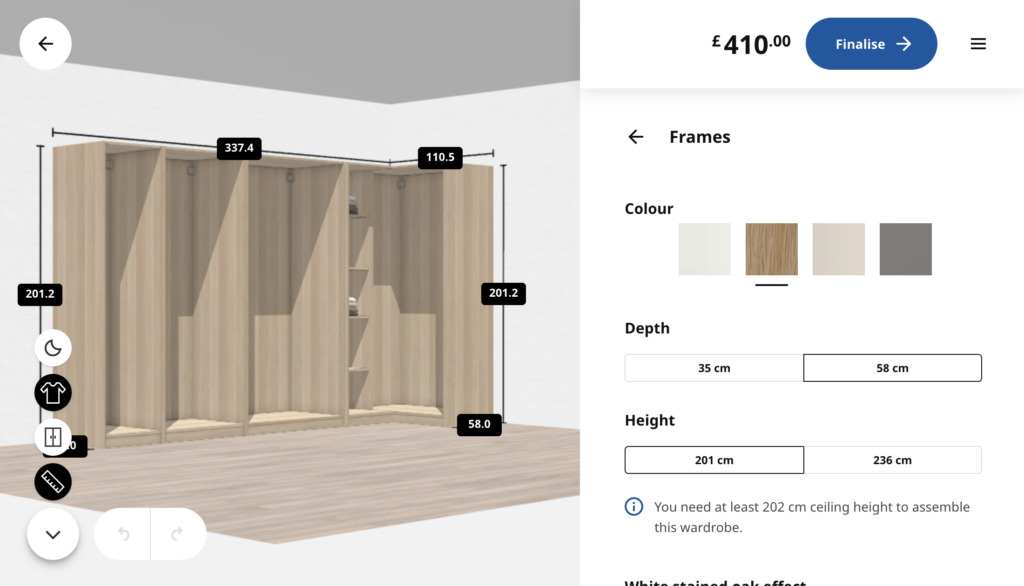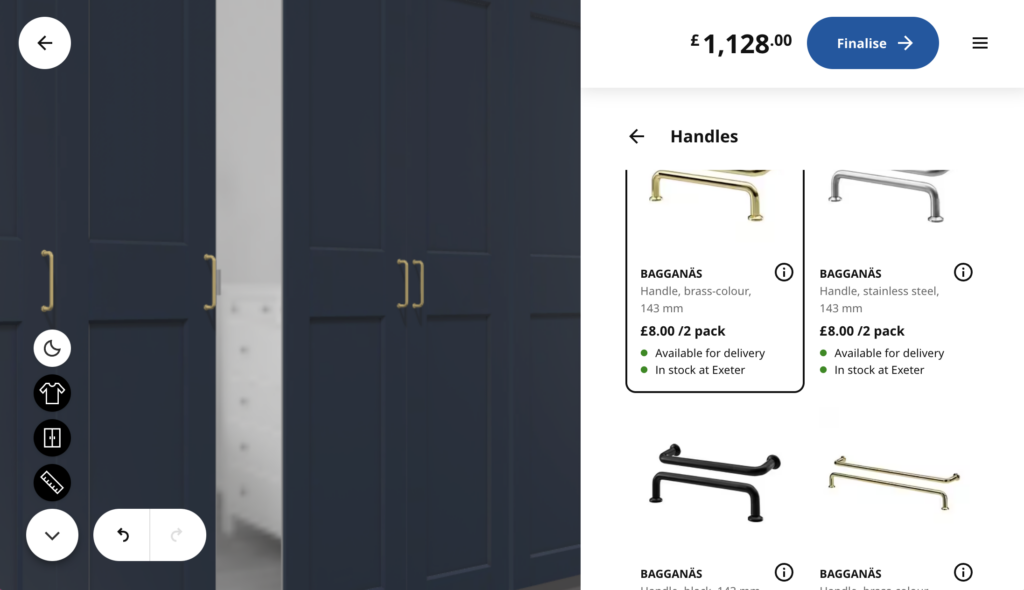Introduction
This case study delves into the research conducted on Ikea, specifically focusing on its wardrobe building tool as a configurator. The tool empowers users to customise their wardrobe designs by moving the visual components and arranging them in a virtual floor space. Ikea’s website stands out for its user-friendly interface, ensuring a seamless buyer journey. With intuitive navigation pinned to the right-hand side, users can effortlessly browse through categories encompassing wardrobe design elements such as shelving systems, doors, and various interior components like drawers and lighting.
PAX Wardrobe research
When taking a look into the PAX builder system I found that the configurator allows users to interactively engage with wardrobe components, dragging and dropping them to create bespoke designs tailored to their needs and measurements. When using the system I realised the tool’s intuitiveness, simplicity, and the buyer-friendly journey it facilitates. The navigational features pinned to the right-hand side, provide users with efficient access to various wardrobe design categories.


Source : https://www.ikea.com/addon-app/storageone/pax/web/latest/gb/en/#/planner
SWOT Analysis:
| Strengths: Innovative Configurator Tool: The wardrobe building tool is a unique and innovative feature, setting IKEA apart in the furniture market. User-Friendly Interface: The website’s intuitive design and easy navigation contribute to a positive user experience. Bespoke Design Capability: Users can customise their wardrobe based on individual needs and measurements, creating a personalised experience. | Weaknesses: Dependency on Online Interaction: The configurator tool relies heavily on online interaction, potentially excluding customers who prefer in-store experiences. Complexity for Novice Users: While user-friendly, the configurator tool maybe complex for individuals unfamiliar with DIY furniture assembly. |
| Opportunities: Market Expansion: IKEA can leverage the success of the configurator tool to expand its presence in the furniture customisation market. For example kitchen building, room design etc. Technology Advancements: Embracing new technologies can enhance the configurator tool, providing additional features and improving user engagement. eg. AI functionality to see the products in situ. | Threats: Competition: Increased competition from other furniture brands o ering similar customisation tools may impact IKEA’s market share. Cybersecurity Risks: As an online tool, the configurator is susceptible to cybersecurity threats, potentially compromising user data and trust. |